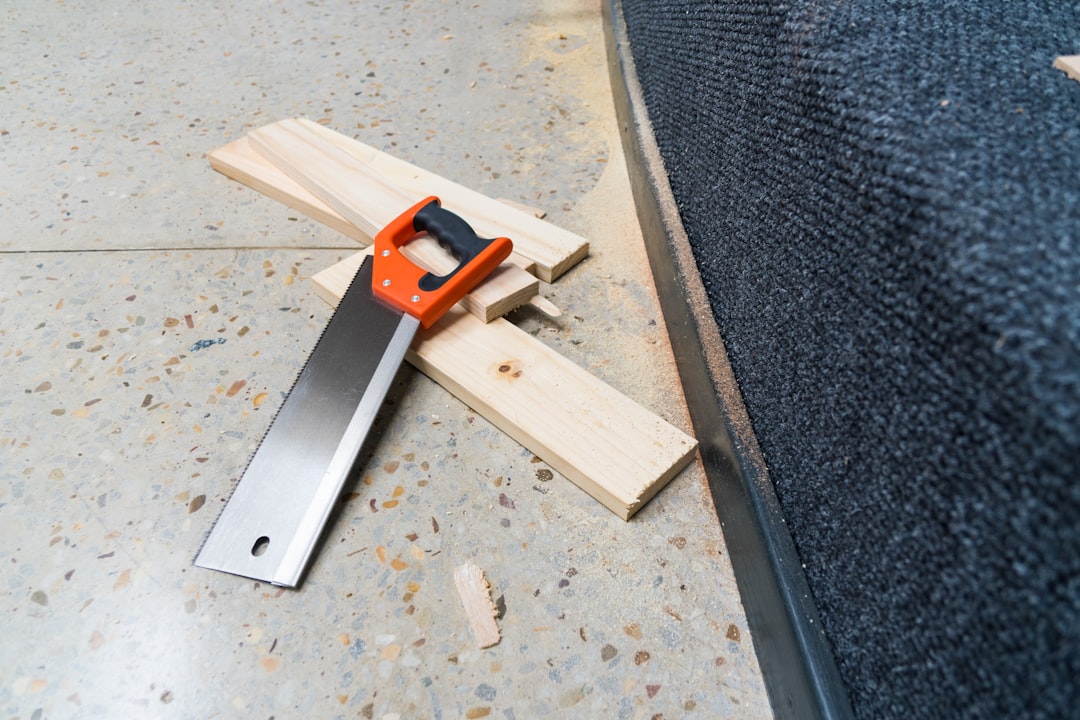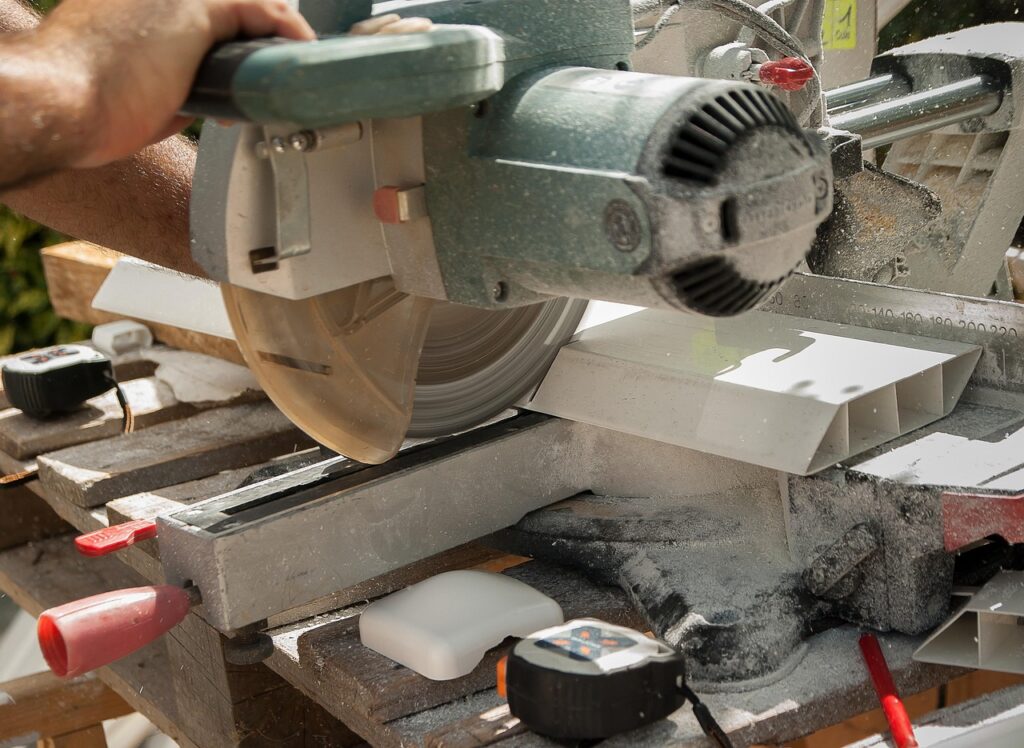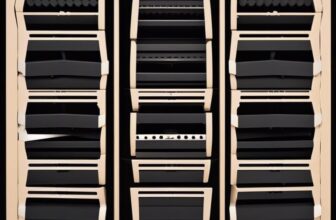Cutting Edge: The Future of Innovations in Circular Saw Technology
Discover the latest innovations in circular and miter saw technology, from smart features and enhanced safety to advancements in battery power and future trends.

Photo by Greyson Joralemon on Unsplash | Commercial use allowed
Innovations in Saw Technology: The Future of Circular and Miter Saws
1. Overview of Recent Innovations in Circular and Miter Saws
Recent advancements in circular and miter saw technology have significantly improved performance and user experience. Among these innovations are internal cooling systems integrated into circular saw blades, which enhance cutting efficiency, particularly when dealing with high-alloy materials such as titanium and nickel-based alloys. This system directs lubricant to the cutting area, effectively reducing heat and extending tool life, thus allowing for higher cutting speeds and increased productivity. Additionally, the miter saw market is anticipated to grow substantially, projected to reach USD 1,821.71 million by 2035, largely driven by innovations in cordless technology and the integration of AI.
Moreover, smart features such as sensors, Bluetooth connectivity, and energy-efficient designs are becoming standard in modern saws. These advancements not only optimise performance but also provide maintenance alerts, ensuring tools remain in peak condition. As prefabricated building materials rise in popularity, there is an increased demand for cutting tools that can adeptly manage various materials beyond traditional wood, prompting manufacturers to innovate continuously. Enhanced user-friendly interfaces are being developed, making complex saw functions simpler to operate and control.
2. Advancements in Saw Blade Technology
The evolution of saw blade technology has introduced remarkable features that enhance both durability and performance. Circular saws now come equipped with advanced battery systems that facilitate all-day operation without the need for recharging, thereby improving mobility on job sites. Innovations in blade materials, such as carbide-tipped designs, have made them more robust and efficient, allowing for faster and cleaner cuts. For instance, the incorporation of laser guides has become a common feature in miter saws, significantly increasing cutting accuracy and reducing material waste.
Additionally, new coatings are being introduced to saw blades to minimise friction and heat, thus extending the lifespan and efficiency of the blades. Multi-functional blades are also gaining popularity, allowing users to cut through different materials without frequently changing blades, which enhances overall productivity. Advances in blade design, including variations in tooth geometry, optimise performance for specific applications, making modern saw blades incredibly versatile.
3. Smart Technology Integration in Saws
The integration of smart technology into saws has transformed how these tools operate, providing users with unprecedented levels of control and efficiency. AI-driven control systems are now being incorporated into saws, allowing for real-time feedback and adjustments during cutting operations. This feature not only enhances precision but also makes the cutting process safer. For example, the inclusion of digital displays provides users with vital information regarding operational status and safety features, thus improving awareness and reducing the likelihood of accidents.
Moreover, smart saws are capable of monitoring performance metrics, offering insights that can help improve cutting precision over time. Remote monitoring capabilities enable users to track performance and maintenance needs through smartphone applications, ensuring tools are well-maintained and operationally efficient. The exploration of augmented reality (AR) technologies in saw designs also promises to guide users visually during complex cuts, further enhancing the user experience.
 4. Safety Enhancements in Saw Design
4. Safety Enhancements in Saw Design
Safety is a paramount concern in the design of modern saws, and manufacturers are incorporating innovative features to mitigate risks. One notable advancement is the SawStop AIM technology, which activates a cartridge to stop the blade within five milliseconds upon contact with skin, significantly reducing the risk of serious injuries. Additionally, many contemporary saws come equipped with visual displays that indicate operational status and maintenance reminders, enhancing user awareness of machine conditions.
Ergonomic designs are also being prioritised to reduce user fatigue and improve control during operation, contributing to overall safety. Features such as anti-kickback mechanisms are increasingly standard, preventing the saw from unexpectedly moving during use. Furthermore, transparent safety guards allow users to maintain visibility of the cutting area while ensuring protection, making modern saws both safer and more user-friendly. New training modules and certifications are also being developed to educate users on best practices and the safe use of advanced saw technologies, emphasising the importance of safety in tool operation.
 5. Impact of Battery Technology on Portability and Convenience
5. Impact of Battery Technology on Portability and Convenience
Battery technology has revolutionised the portability and convenience of circular saws, making them indispensable on job sites. Cordless circular saws are in high demand due to their enhanced mobility, allowing users to work in various locations without being tethered to a power source. The widespread adoption of lithium-ion batteries has enabled saws to operate for extended periods without needing frequent recharges, thus improving efficiency and usability.
Moreover, rapid charging technologies are being developed, enabling users to quickly recharge batteries and minimise downtime. Battery management systems are now integrated into saw designs to optimise battery life and performance based on usage patterns, ensuring that tools are always ready when needed. Manufacturers are also exploring hybrid power options that combine battery and corded capabilities, providing users with greater operational flexibility and convenience.

6. Predictions for Future Developments in Saw Technology
Looking ahead, the saw technology landscape is set to evolve further with a focus on sustainability and automation. Manufacturers are expected to increase their efforts in creating energy-efficient designs and utilising recycled materials in the production of saws. The future of saw technology is likely to see more connected and automated features, ensuring tools remain relevant in both construction and DIY projects.
As the DIY culture continues to flourish, the home use segment of the miter saw market is projected to grow at a CAGR of 6.3%, indicating a rising demand for user-friendly and efficient tools. Innovations in robotics may lead to fully automated saw systems capable of performing complex cutting tasks without human intervention, streamlining operations and improving productivity. Additionally, the trend towards customisation in tools will see manufacturers offering more options for personalisation in saw features and designs, catering to a diverse array of user preferences and needs. Advances in material science may introduce lighter and more durable materials in saw construction, enhancing portability and user comfort as well.
By staying attuned to these trends and innovations, the future of circular and miter saws promises not only increased efficiency but also improved safety and usability, making them indispensable tools in various industries.





